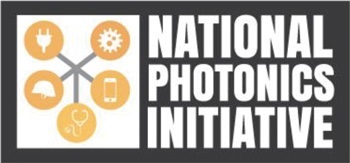23 Oct 2014
November proposers' meeting in Arlington and NPI webinar to disseminate latest information.

by Ford Burkhart in Tucson
National Photonics Initiative representatives have announced key new dates for the next stage of the proposed $210 million “super-foundry” for US photonics announced by President Obama two weeks ago.
They include a “proposers’ meeting” in Arlington, Virginia, close to Washington DC, on November 19, while the following day will see a webinar hosted on the NPI website to discuss the most recent information for the competing institutions.
The initial, conceptual round, will be followed by a second, more concrete final proposal round next year. Contracts for what’s being called a “regional hub” are not likely to be inked until fall of 2015, said panel members at the OSA 2014 Frontiers in Optics (FiO) conference, held this week at the JW Marriott Tucson Starr Pass Resort in Arizona.
At the meeting, the panel members debated the merits of the “big three” contenders – seen as central Florida; Rochester, New York; and the “optics valley” region of southern Arizona. But others cited southern California, New Mexico and Silicon Valley as potential hosts for the hub.
The $110 million being made available by the Obama administration via the Department of Defense will represent the largest US federal investment made so far under the Innovative Manufacturing Institutes (IMI) program.
Application ideas
In terms of what the hub might end up manufacturing, and potential application areas, the panellists mentioned optical signal processing, electronic warfare, information transport, drug discovery, wind turbine control LIDAR sensors, and clinical diagnostics.
Videos shown at the event included a high-power laser system destroying a mortar shell, and an imaging system to see objects on a battlefield through smoke and haze.
Others highlighted how lasers can cut through hardened steel, and showed how photonic components might be used to view brain function.
Tom Hausken, senior industry advisor at OSA, said “everybody is going to be a member” of the foundry, but he added that it would not be a “virtual” center.
“There will be one facility, somewhere, that will be fabricating something,” he said. Asked whether the $210 million of anticipated public-private funding was not in fact “a drop in the bucket” of what was really needed, compared to investments in Europe and particularly Germany, Hausken added:
“Europe is doing a lot of little projects in the area.” Generally worth about €100 million, he said that these had been packaged and branded very well, notably in the form of the European Commission’s Photonics21 platform.
US efforts, when added up, are about the same, Hausken insisted. “The hub effort is not the Fraunhofer model,” he added, referring to the network of institutes in Germany. “This is significantly more challenging.”
Coherent process
Tom Baer of Stanford University, chairman of the NPI's steering committee, said the intention was to try to give more coherence to US efforts in photonics.
“We will be competitive [with Europe],” he said, adding that in relative terms the US will be investing “the same ratio” of spending on photonics. “We just need coherence in the whole process.”
Alan Willner, a key figure in the emergence of the NPI and also an engineering professor at the University of Southern California (USC), said that a few months ago indications had suggested that the federal government would seek proposals at $70 million for the super-foundry.
That figure was subsequently raised to $100 million, while “a few days later” it was extended to $110 million. With matching funds expected from industry and elsewhere, he said that the photonics industry was looking at a quarter of a billion dollars of investment.
“That’s where we are,” Willner told the panel session. “This will be something that can make a huge impact.” Companies, universities and training institutes will all be joining in. In a military metaphor, he sees the effect as something akin to viewing an aircraft carrier, with 20 or 30 other, smaller, ships providing support.
It is hoped the investment will lead to futuristic products with better performance, more efficient use of power, and lower cost of production. “Who in the world doesn't want that?” Willner asked.
Baer added that one example of what the foundry could provide data centers with was the ability to move data ten times faster than at present, with ten times better energy efficiency. “But that will take years of work,” he conceded.
| © 2024 SPIE Europe |
|